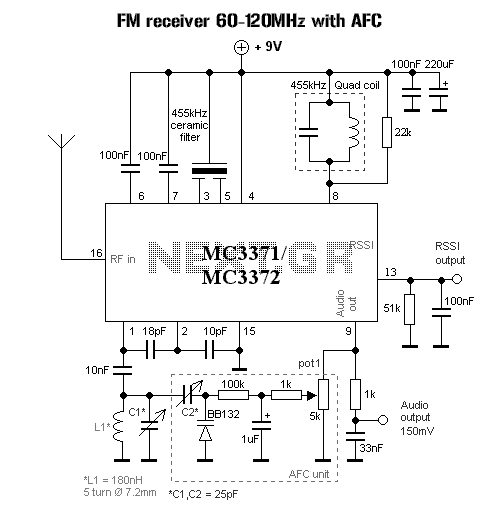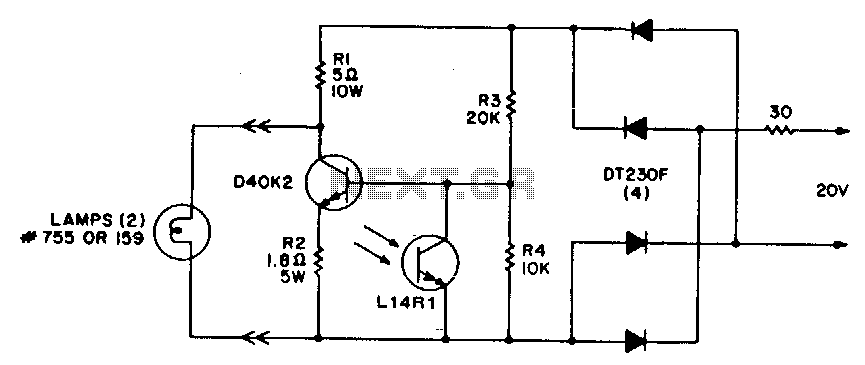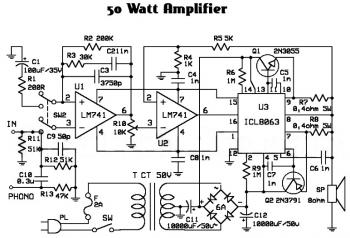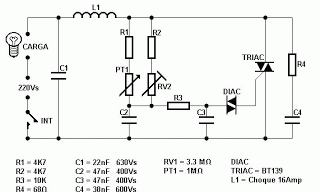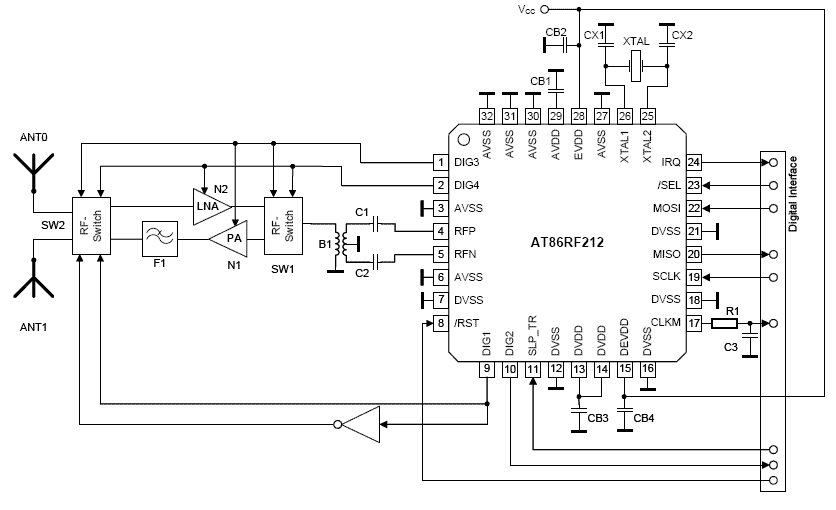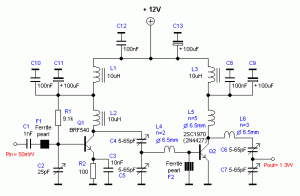
The dual-way control SCR liquid level control circuit
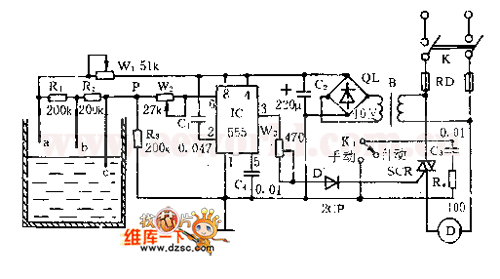
The controller consists of a liquid level sensor, a trigger controller, and a step-down rectifier circuit. The water level detection poles labeled a, b, and c form a bias circuit, functioning as a water level detector with components W1, R1, R2, and R3. When the water level falls below point b, the voltage across R3 is calculated as Vp-b = R3 × VDD / (Rw1 + R1 + R2 + R3), which becomes less than 1/3 VDD. This condition causes the 555 timer to be offset, triggering the SCR to conduct.
The circuit operates by monitoring the water level through the three detection poles. The poles are strategically placed at different heights to provide a range of water level detection. The bias circuit is established using resistors R1, R2, and R3 in conjunction with the water level sensor W1. The output voltage from the detection poles is compared to a reference voltage level derived from the supply voltage VDD.
When the water level is above pole b, the voltage across R3 remains sufficiently high, preventing the 555 timer from triggering. However, as the water level drops below pole b, the voltage divider effect created by the resistors results in a voltage that falls below the threshold of 1/3 VDD. This triggers the 555 timer, which is configured in a monostable mode, leading to a change in its output state.
The triggered output from the 555 timer activates the SCR (Silicon Controlled Rectifier), which allows current to flow through the load circuit. This mechanism can be utilized for various applications such as activating a pump to refill the water tank or turning on an alarm system when water levels are critically low. The step-down rectifier circuit ensures that the control circuit operates at a safe voltage level, providing the necessary power for the entire system while protecting sensitive components from over-voltage conditions.
In summary, this circuit effectively combines a liquid level detection system with a control mechanism that can respond dynamically to changes in water levels, demonstrating a robust solution for automated water management systems.See as the figure, the controller consists of liquid level, trigger controller and step-down rectifier circuit, etc. The water level detecting poles of a, b and c compose the bias circuit as the water level detector with W1, R1, R2 and R3.
When the water level is below b, Vp-b?R3×VDD/?Rw1+R1+R2+R3?<1/3VDD, 555 is offset, SCR is triggered and conduct.. 🔗 External reference
The circuit operates by monitoring the water level through the three detection poles. The poles are strategically placed at different heights to provide a range of water level detection. The bias circuit is established using resistors R1, R2, and R3 in conjunction with the water level sensor W1. The output voltage from the detection poles is compared to a reference voltage level derived from the supply voltage VDD.
When the water level is above pole b, the voltage across R3 remains sufficiently high, preventing the 555 timer from triggering. However, as the water level drops below pole b, the voltage divider effect created by the resistors results in a voltage that falls below the threshold of 1/3 VDD. This triggers the 555 timer, which is configured in a monostable mode, leading to a change in its output state.
The triggered output from the 555 timer activates the SCR (Silicon Controlled Rectifier), which allows current to flow through the load circuit. This mechanism can be utilized for various applications such as activating a pump to refill the water tank or turning on an alarm system when water levels are critically low. The step-down rectifier circuit ensures that the control circuit operates at a safe voltage level, providing the necessary power for the entire system while protecting sensitive components from over-voltage conditions.
In summary, this circuit effectively combines a liquid level detection system with a control mechanism that can respond dynamically to changes in water levels, demonstrating a robust solution for automated water management systems.See as the figure, the controller consists of liquid level, trigger controller and step-down rectifier circuit, etc. The water level detecting poles of a, b and c compose the bias circuit as the water level detector with W1, R1, R2 and R3.
When the water level is below b, Vp-b?R3×VDD/?Rw1+R1+R2+R3?<1/3VDD, 555 is offset, SCR is triggered and conduct.. 🔗 External reference
